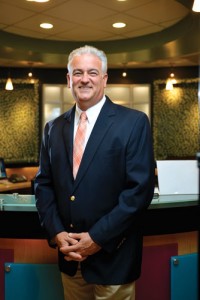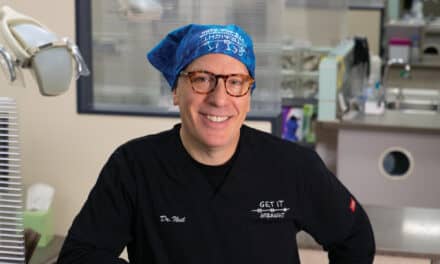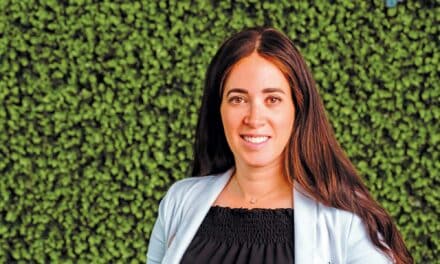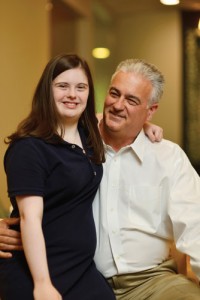
Greer and his daughter, Lindsey. Having a daughter with Down syndrome, he says, has given him unique insight regarding the nuances of how to provide orthodontic treatment to this patient base.
By Lori Sichtermann | Photography by Ben Keeling
According to the Centers for Disease Control and Prevention (CDC), an estimated 6,000 babies are born in the United States each year with Down syndrome. To put it another way, approximately one out of every 691 live births results in a Down syndrome diagnosis.
The National Institutes of Health states that Down syndrome is the most frequent chromosomal cause of mild to moderate intellectual disability. In fact, the National Down Syndrome Society notes that there are currently more than 400,000 people living in the United States with Down syndrome.
Behind all these numbers and statistics, however, is a group of individuals—infants, children, teens, and adults—who have distinct personalities, interests, likes, dislikes, fears, and anxieties; the same as anyone else. Therefore, when it comes to orthodontic treatment for patients with Down syndrome, orthodontists such as James R. Greer, DMD, MS, of White, Greer & Maggard Orthodontics PSC, based in Lexington, Ky, note the importance of understanding the similarities in treatment for these unique patients, while at the same time realizing that quite a few other considerations must be made as well.
“There are some nuances for treatment that I’ve learned through the years,” Greer explains. “The only way I could describe it is that in orthodontics, we work with patients who are interested in their dental care and their appearance. However, when you work with an individual with Down syndrome, they’re aware of their appearance, but it’s not what motivates them. They’re generally there because a family member or a dentist has recommended orthodontic treatment,” he explains. “When they arrive at the office, they know that their mouth or their teeth are going to be looked at, but they don’t fully understand the entire orthodontic process, or what the end goal might be.”
[sidebar float=”right” width=”200″]Practice Profile: White, Greer & Maggard Orthodontics PSC
Location: Lexington, Ky, with five satellite offices (group practice)
Number of chairs: 7 per office
Average patients per day: 110
Days worked per month: 17
Years in practice: 34
Education: Dental, University of Kentucky; orthodontic, University of North Carolina,Chapel Hill; ABO diplomate
Top products used: Various fixed appliances, Herbst, Invisalign
Website: wgmortho.com-[/sidebar]
Greer, who has been practicing orthodontics for 34 years, is particularly interested in treating this patient base. His 27-year-old daughter, Lindsey, has Down syndrome. He’s provided orthodontic treatment for her, as well as for nearly 30 other Down syndrome patients in the surrounding Lexington community, since entering into the profession in 1980.
“I may have provided treatment more than the average practitioner partly due to my reputation in the community having a child with Down syndrome,” Greer adds. “But, I believe it’s also because a lot of families come to us based on the experience my staff and I have working with patients with special needs.”
Greer is a third-generation dental professional. His father was an orthodontist, and his grandfather was a country dentist from East Tennessee. “Dentistry has been a big part of our family for years,” he explains. “I’m fortunate to have had exposure to orthodontics from childhood.”
After graduating from dental school at the University of Kentucky, Greer went on to the University of North Carolina, Chapel Hill, for orthodontic training. He graduated in 1980, and entered into practice with his father in central Kentucky. As Greer explains, he technically still works alongside his father—the 87-year-old still practices part-time in one of Greer’s satellite offices.
Greer feels honored to still be working alongside his father, explaining that family is a priority for him. And, as his daughter, Lindsey, provides part-time administrative assistance in the practice as well, the element of a cohesive family environment is a benefit.
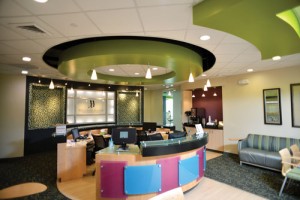
Greer and his team work together to ensure patients who visit the office for the first time feel welcomed and at ease.
“When a patient with Down syndrome comes into our office for the first time, the initial experience becomes an interaction between the office staff, myself, and the patient’s family,” Greer explains. “We like to set the tone for a welcoming environment from the very beginning.”
The initial meeting is an important part of the orthodontic process for any practice. But, as Greer explains, there are complexities involved with working with Down syndrome patients, and getting started on the right foot is crucial to the process.
“I handle every single patient—whether they have Down syndrome or not—the same way in those initial meetings,” he explains. “It’s important for me to learn about the patient’s interests, what their fears might be, and what their goals are.
“With a patient who has Down syndrome, this process takes a little bit more TLC,” he adds. “Once I learn some of those fears, I set up the appointment sequence in such a way that I’m able to gain their confidence and win them over as a friend before getting too involved in longer appointments that involve taking impressions or seating appliances that may cause them discomfort.”
Greer has found that shorter appointments, scheduled more frequently, is the ideal route to take with Down syndrome patients. The frequency of appointments helps to establish a stronger relationship with the staff and the doctor, which, ultimately, makes the whole process easier on the patient.
“By the time we get to the point in the treatment when important procedures take place, they trust me and they look forward to coming into the office,” he says. “It’s a much more pleasant experience for them.”

When treating patients with Down syndrome, Greer and his team realize the importance of treatment sequencing and timing.
Providing Treatment
Over the course of his more than 3 decades practicing orthodontics, Greer has gained invaluable insight into what treatment for Down syndrome patients typically entails. He notes that these patients commonly exhibit a Class III skeletal and dental relationship with maxillary deficiency and airway concerns.
Yet, as Greer explains, one of the most important considerations that must be made in the planning process for patients with Down syndrome is the timing of treatment.
“With Down syndrome, you have unusual changes in both dental anatomy and oral physiology, meaning enamel, skin tone, muscle tone, and all kinds of other things are slightly different with these individuals. There are also issues such as skeletal deficiency in the mid-face or connective tissue problems that make treatment a little different,” he says. “These elements affect the oral environment in such a way that you need to adjust your treatment sequencing, your treatment timing, and actual treatment procedures to accommodate these characteristics.”
According to Greer, many patients with Down syndrome may also have missing or extra teeth due to their stage of dental development. “Let’s say the average age of treatment for most patients is 11 to 13. For an individual with Down syndrome, that age variable could be between 16 and even 20, because of the changes in skeletal and dental maturation,” he explains. “These individuals experience a different maturational process throughout their lives, to a certain extent. Orthodontic treatment for these patients needs to be tailored to the patient’s time frame of dental, skeletal, and physiological development, whatever that might be.”
In addition to oral considerations presented by patients with Down syndrome, Greer notes the behavioral challenges as well.
“Probably the biggest challenge we have with these patients is having them cooperate at home,” he says. “In other words, staying on top of oral hygiene and wearing their elastics, expansion appliance, or pro-traction head gear. Getting a person with Down syndrome (and their family) to stay on top of these types of things is difficult, at best.”
As the parent of a child with Down syndrome, Greer has personal experience understanding the abilities and limitations of these patients. This personal experience, he explains, has helped him in his interaction with his Down syndrome patients and with how to provide orthodontic care to them.
“I didn’t really have anyone in my educational process that had worked a lot with these patients,” he recalls. “In my graduate orthodontic program at Chapel Hill, we had some very strong training in the management of cleft lip and cleft palates and the interaction with the oral surgery department and the department of plastic surgery, but we didn’t receive any formal training on how to treat patients specifically with Down syndrome.”
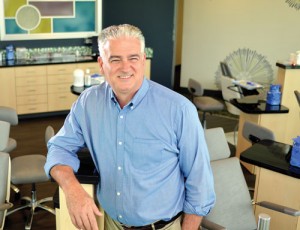
As a third-generation dental professional, Greer has treated more than 30 patients with Down syndrome in the course of his 34 years practicing orthodontics.
As such, Greer is relatively self-taught regarding the nuances of treating patients with Down syndrome, as well as how to work with their families so that the treatment goes smoothly and is successful.
“Like many aspects of orthodontics, the main resource for learning about a specific technique or process is through the literature,” Greer notes. “The university library at the University of Kentucky is just around the corner from where I live, so I’ve spent quite a few afternoons looking through not just the orthodontic literature, but the National Down Syndrome Congress, and other periodicals that relate to Down syndrome.”
Greer is also an advocate for attending professional meetings and conferences, both on a local and national level. Even though he occasionally contributes to the discussion of orthodontic treatment for patients with Down syndrome by giving lectures on what he’s learned over the years, he’s always interested in talking with his peers to learn more on the topic.
“Once you develop a relationship with someone who has done some of the same treatment, it’s a great resource to have,” he says. “Ours is a diverse and talented profession, and it’s great to be able to reach out to others with questions if needed.” Email correspondence makes that much easier, enabling the transfer of diagnostic materials and written correspondence essentially instantaneous.
In orthodontics, there are anxieties, challenges, and special considerations with all patients. As an orthodontist who’s been practicing for more than 30 years, Greer has seen his fair share of it all. However, he notes that when it comes to the Down syndrome patients he’s treated, the experience of working with these individuals is quite unique.
“The relationships and the friendships and the warmth they bring to each appointment is nothing short of amazing,” he says. “When a patient comes in who has Down syndrome, it’s just a lot of fun to have someone bouncing through the door that’s got a big broad smile and gives everyone a hug. Not very many patients do that.”
Orthodontics is about your smile display, and, as Greer notes, individuals with Down syndrome love to smile. “Just like with any other patient, orthodontics improves their smile. Plain and simple,” he adds.
Similar to his peers, Greer and his partners at White, Greer & Maggard Orthodontics offer the latest in technology as a way to provide efficient care to each. He notes, however, that there hasn’t been too much development with regard to products or technology that could specifically help the treatment of patients with Down syndrome.
“From our perspective, the technical advancements that have been made in recent years involve a better approach to aesthetics, and not so much in teeth movement. And, that’s been beneficial to all of our patients, really,” he says.
For patients with Down syndrome, however, Greer notes that treatments for periodontal problems or esthetic concerns have a way of enhancing the teeth. Thus, using new aesthetic techniques, either bleaching or veneers, or crowns or overlay appliances, can enhance the appearance of the teeth, he says. “And, for these individuals, it’s all about the smile.”
And while it may be all about the smile, Greer notes it’s also all about the relationship in developing that smile.
Through his personal experiences with his daughter, as well as the nearly 30 patients with Down syndrome he’s treated over the course of his career, Greer understands the importance individuals with Down syndrome place on social interaction. As he explains, for these folks, being social goes beyond the family environment and extends to interacting within the community at large.
“Because we see these patients more frequently—typically, once a month—it really becomes a social event for them to visit the office,” he adds. “This re-emphasizes the importance of developing trusting relationships with these patients. It’s probably as big, or bigger, than the treatment itself.”
Greer notes that the relationships he develops with a person with Down syndrome is more of a friendship, and not just a patient and doctor interaction. “We get invited to high school graduations and different things related to their lives, instead of just being their orthodontist,” he says. “We retain many of these friendships even after treatment has been completed. For me, that’s been one of the most rewarding elements of my career.” OP
[sidebar float=”right” width=”500″]Field Experience
More than 4.2 million athletes with intellectual disabilities participate each year in Special Olympics programs around the world. And, according to the organization, more than 1 million people work as coaches and volunteers for the more than 220 programs available in 170 countries.
James Greer, DMD, MS, of White, Greer & Maggard Orthodontics PSC, based in Lexington, Ky, has been one of the million individuals who support the Special Olympics by donating his time to the organization.
For 8 years, Greer served on the Special Olympics board of directors for the state of Kentucky. While this was a fulfilling experience, he says he truly cherishes his experiences having served as one of the leaders of the Kentucky state games. His daughter, Lindsey, who has Down syndrome, participated in the track and field events at the state level for 12 years.
“It was just a phenomenal experience for Lindsey and for all the athletes and volunteers,” Greer recalls. “The games provide a fun and encouraging outlet for the athletes, and I’m very happy to have been a part of it for so long.”
Although Lindsey no longer competes in the games, Greer recalls many instances in which, while on the field with the athletes, he called upon many of his experiences working with patients with Down syndrome in his practice.
“The most important thing we can do when we first meet these individuals, is to establish a comforting relationship with them,” he explains. “We ask them about their interests and what motivates them. This establishes an element of trust and friendship that’s necessary throughout the orthodontic process.”
Translating his work onto the track at the Special Olympic games, Greer notes one instance working the 50-yard dash years ago, in which a young man was, as Greer puts it, “not in the mind-set to race that day.”
“The layout of the track was such that the 50-yard dash area was quite removed from where most of the families and spectators were seated,” he recalls. “The young man was not wanting to race, and so I and some other volunteers spent a little extra time talking with him to find out what his interest were and what motivated him—much like we do in the office.”
From spending time with the young athlete, Greer realized the young man loved going to the grocery store. “So, the other volunteers and I came up with the idea to ask him if he had his own Kroger card—a Cincinnati-based grocery chain. We told the young man that if he ran the race, and gave it his best effort, they were pretty sure the judges were giving out Kroger cards to those who crossed the finish line.”
It was then that Greer reached into his wallet and pulled out his own Kroger card as “proof.”
“The young man not only ran the race, but he won,” Greer says. “After he gave everyone a hug, he didn’t seem too interested in the ribbons and the medals. His big prize that day was winning that Kroger card.” OP
[/sidebar]
Lori Sichtermann is a freelance writer for Orthodontic Products. She can be reached at [email protected].


